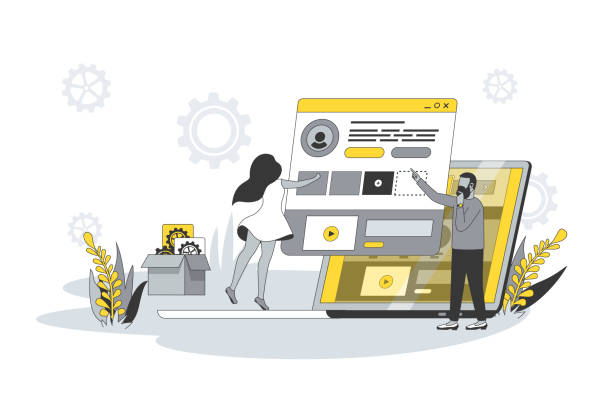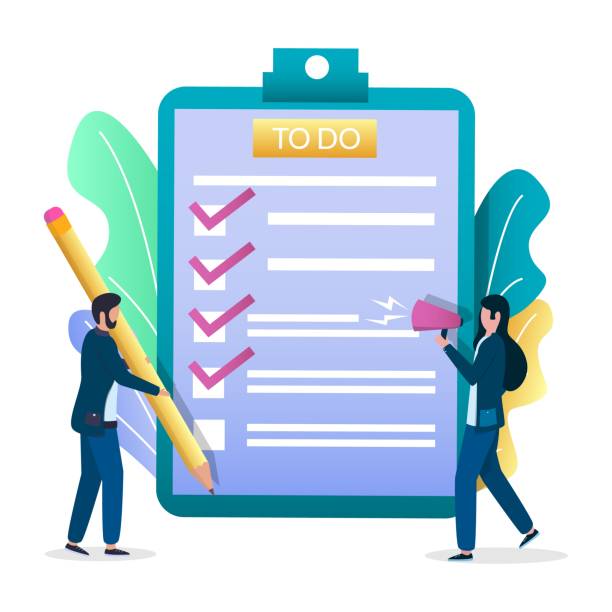What is On-Page SEO and Why is it Important?

In today’s highly competitive world, being seen among a multitude of websites has become a major challenge for many businesses.
One of the most powerful tools to achieve this goal is On-Page SEO.
On-page SEO refers to a set of activities performed directly on your website’s content and structure to improve its ranking in search engine results.
These activities include optimizing #keywords, #title_tags, #meta_descriptions, #images, and the overall content structure.
The importance of on-page SEO stems from the fact that search engines like Google initially gain a proper understanding of the page’s topic and its relevance to user queries through these internal elements.
Without strong on-page SEO, even the best content might never reach its audience.
In other words, on-page SEO is the foundation of any successful SEO strategy and helps search engines correctly index and rank your pages.
This requires a deep understanding of how Google’s algorithms work, as well as user needs.
By focusing on on-page SEO, you not only increase your website’s visibility but also improve the user experience (UX), which in turn can lead to a lower bounce rate and increased user dwell time on the site.
Did you know that even the smallest changes in on-page SEO can make a big difference in rankings? This is a vital educational component that every webmaster should master.
Optimizing content for on-page SEO doesn’t just mean stuffing it with keywords; it involves providing valuable, readable, and relevant content that appeals to both users and search engines.
In the remainder of this guide, we will explore the details of this process in an explanatory and step-by-step manner.
Did you know that your company’s website is the first point of contact for 75% of potential customers?
Your website is the face of your brand. With Rasawp‘s corporate website design services, build an online presence that earns customer trust.
✅ Create a professional and lasting image for your brand
✅ Attract target customers and increase online credibility
⚡ Get free consultation from Rasawp experts!
Keywords and Their Vital Role in On-Page SEO
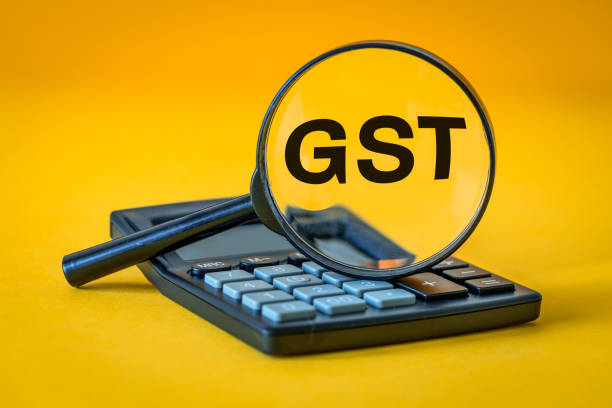
Choosing and correctly using keywords is the backbone of any successful on-page SEO strategy.
Keywords are the phrases users enter into search engines to find the information, products, or services they are looking for.
Understanding what phrases your audience searches for is the first and fundamental step in optimizing on-page SEO.
The keyword research process is a specialized area where various tools like Google Keyword Planner, Ahrefs, Semrush, and Ubersuggest can assist you.
The goal is to find keywords relevant to your business and content that have a suitable search volume and reasonable competition.
In addition to main keywords, using long-tail keywords (which consist of three or more words) is very important.
These keywords usually have lower search volume but come with higher conversion rates because they more precisely indicate user intent.
For example, instead of “shoes,” you can use “best running shoes for winter.”
After selecting keywords, the next step is to strategically place them within the page’s content.
This includes placing the main keyword in the page title (Title Tag), meta description, H1, H2, and H3 headings, as well as in the introductory paragraphs and throughout the text.
However, you should avoid keyword stuffing, as this practice not only results in penalties from search engines but also severely degrades the user experience.
Keyword density should appear natural and not harm the readability of the text.
This is a key guideline: Always think about the user first, then the search engine.
Keyword optimization is an ongoing process that requires monitoring and adjustment to ensure it always aligns with the latest algorithms and search trends.
Content Optimization for Improved On-Page SEO Performance
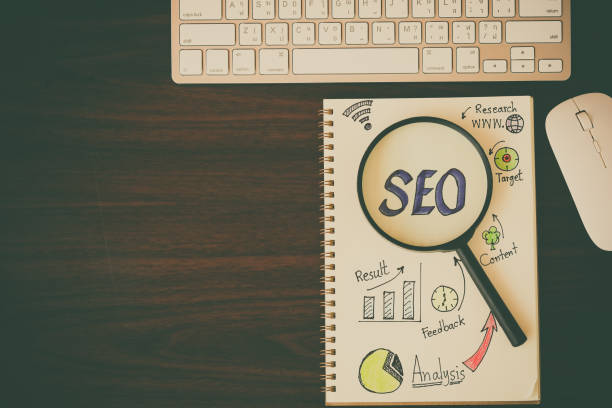
Content is king; this statement holds truer than ever in the world of SEO.
Optimizing content for on-page SEO goes beyond merely placing keywords; it involves producing high-quality, valuable, and engaging content that is optimized for both audiences and search engines.
Your content should not only provide comprehensive and accurate information but also be written in a way that is easy to read and understand.
Using short paragraphs, simple sentences, bulleted and numbered lists, and subheadings (H2, H3) significantly aids text readability.
Furthermore, specialized and unique content is one of the most important factors that search engines prioritize.
Copying content from other websites can severely damage your ranking.
In analytical discussions, it’s important to note that Google’s algorithms have become smarter and, instead of focusing solely on keywords, they now focus on understanding the overall semantic meaning of the content and its relevance to user intent.
Therefore, using semantically related keywords (LSI Keywords) that naturally appear in the text helps search engines better understand the main topic of your page.
For example, if you are writing about “potatoes,” words like “starch,” “table,” “food,” and “planting” can be LSI Keywords.
Also, longer and more comprehensive content generally performs better in search results, provided that every section is valuable and free of redundancy.
Content optimization is an ongoing guidance and involves reviewing and updating old content to ensure it remains fresh and relevant.
Good content answers user questions, solves their problems, and provides added value.
This approach helps internal optimization to make your pages stronger, both technically and in terms of content.
Content Optimization Checklist for On-Page SEO
| Essential Factors for Content Optimization | |
|---|---|
| Factor | Explanation |
| Content Quality | Comprehensive, unique, and valuable content that answers user questions. |
| Keywords | Natural and strategic use of main and LSI keywords throughout the text. |
| Readability | Short paragraphs, simple sentences, lists, and use of subheadings. |
| Content Length | Producing in-depth and lengthy content (if necessary) that covers all aspects of the topic. |
| Updates | Regular review and update of old content to maintain relevance and freshness. |
URL Structure and Title Tag Optimization in On-Page SEO
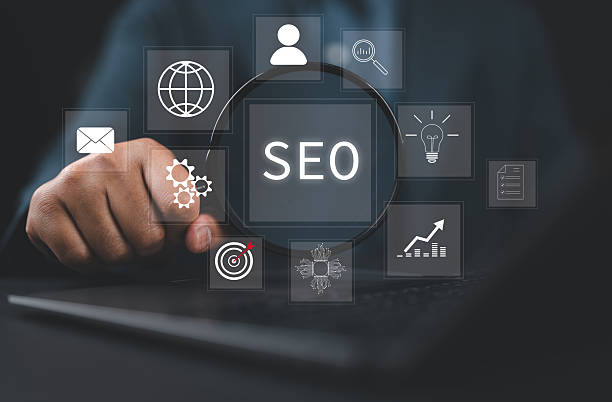
URL structure and the Title Tag are two very important visual and technical elements in on-page SEO that help search engines and users understand your page’s topic at a glance.
A good URL should be short, descriptive, and include the page’s main keyword.
Avoid numbers, complex characters, and unnecessary words in your URL.
For example, instead of yoursite.com/blog/post_id=1234&category=seo-tips, use yoursite.com/seo-irani/behine-sazi-url-title-tag.
This is a simple but important explanation regarding URL structure that directly affects how search engines and users understand your content.
The Title Tag is the most important tag in on-page SEO, displayed in the browser tab and search results.
The title tag should be between 50 and 60 characters and include the page’s main keyword at the beginning.
An engaging and relevant title tag increases your click-through rate (CTR), which is an important ranking factor.
A good title tag not only informs search engines about the page’s topic but also encourages users to click on your link.
This is a practical guideline: write a title that is both informative and curiosity-provoking.
Use keywords in your title tag, but avoid keyword stuffing.
The title tag and URL are the first things users and search engine bots see; therefore, optimizing them is of high importance in internal optimization.
Check if your URLs are readable and logical, and if your title tags fully reflect the page’s topic. These questions are part of a thought-provoking content approach that prompts you to think deeper about basic SEO elements.
How much does losing business leads due to an unprofessional website cost you? Solve this problem forever with professional corporate website design by Rasawp!
✅ Increase credibility and trust of potential customers
✅ Easier attraction of new business leads
⚡ Get a free consultation now!
Meta Description and Header Tags (H Tags) in On-Page SEO
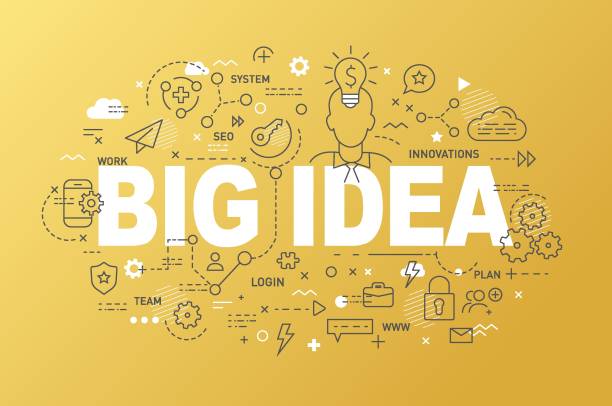
After the title tag and URL, it’s the turn of the Meta Description and Header Tags (H Tags), which play an important role in strengthening on-page SEO.
The meta description is a short, compelling explanation of about 150-160 characters that appears below the page title in search results.
Although the meta description does not directly affect ranking, it significantly impacts the click-through rate (CTR).
A good meta description should include the main keyword, provide a summary of the page’s content, and encourage users to click.
This is an excellent opportunity to market your content on the search results page and is an educational component that requires special attention.
Header tags (H1, H2, H3, and…) define the hierarchical structure of your content.
H1 is the most important page heading, usually the main article title, and should include the main keyword.
There should only be one H1 per page.
H2s are used for main subheadings, and H3s for more minor subheadings.
Correct use of header tags not only improves content readability for users but also helps search engines better understand the structure and main topics of your content.
This gives your on-page SEO more power.
Did you know that Google uses header tags to better understand text and highlight important sections of content? This is a thought-provoking content question that emphasizes the importance of correctly using these tags.
For example, using H2 for main sections of an article and H3 for more detailed sub-sections within those, allows users to quickly scan and find the content they are looking for, creating a positive user experience (UX).
These optimizations ultimately help the search engine better index and rank your content.
Image Optimization and Page Load Speed in On-Page SEO
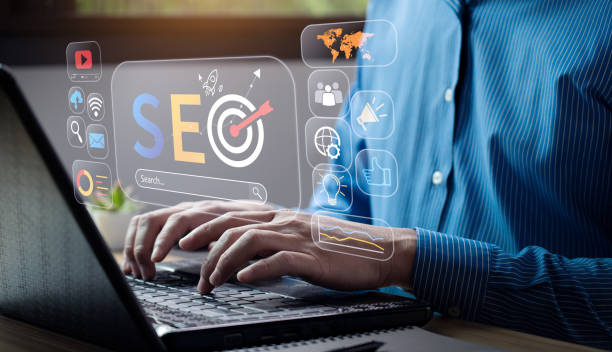
Images and page load speed are two vital factors often overlooked in on-page SEO, yet they significantly impact user experience and site ranking.
Image optimization involves several key steps.
First, compressing images to reduce their size without significant quality loss.
Tools like TinyPNG or other websites can assist in this regard.
Second, using modern image formats like WebP, which have smaller file sizes.
Third, and most importantly for SEO, adding alternative text (Alt Text) to images.
Alt Text is a short, precise description of the image content and should include relevant keywords.
This text not only helps search engines understand the image but is also useful for visually impaired users and is a specialized and important guideline for improving website accessibility.
Page Load Speed is also a direct ranking factor in Google.
Today’s users expect websites to load quickly, and slow websites have high bounce rates.
To improve load speed, you can take actions such as optimizing CSS and JavaScript code, using browser caching, and choosing a fast and reliable hosting provider.
Tools like Google PageSpeed Insights help you identify website speed issues and find solutions to fix them.
This is an important explanation for understanding how technical performance impacts on-page SEO.
Have you ever considered how much losing visitors each second of page load delay can lead to? This is a thought-provoking content that highlights the importance of site speed.
Overall, optimizing images and load speed are integral components of on-page optimization that not only help your ranking but also significantly improve the user experience.
Internal and External Link Building for On-Page SEO Improvement
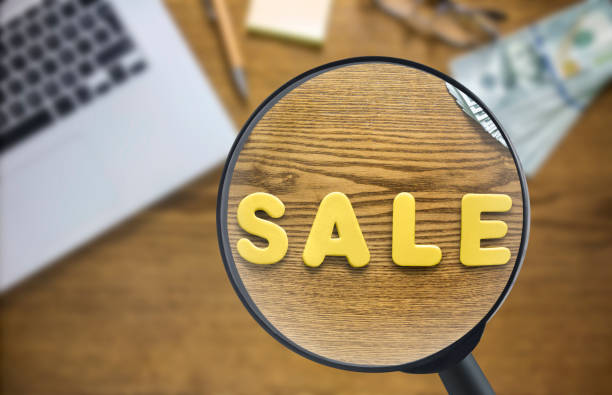
Link building, both internal and external, is one of the strongest signals for search engines and plays a fundamental role in on-page SEO.
Internal linking means linking different pages of your website to each other.
This has several benefits: Firstly, it helps search engines better understand your website’s structure and find and index new pages faster.
Secondly, it distributes Page Authority among your site’s pages, giving more power to more important pages.
Thirdly, it improves user experience and helps users easily navigate your site and find more relevant information.
Using relevant and descriptive Anchor Text for internal links is crucial; instead of “click here,” use “comprehensive on-page SEO guide.”
This is a practical and vital guideline for strengthening internal link structure.
External linking (Outbound Linking) means linking from your site to other reputable and relevant websites.
Contrary to some beliefs, linking to other sites does not harm your SEO; rather, it signals to search engines that your content is well-researched and trustworthy.
This can help your site’s credibility and provide your readers with additional valuable resources.
This is a specialized aspect that directly impacts your credibility and on-page SEO.
Of course, you must ensure that external links point to high-quality websites relevant to your topic.
Also, you can use external links with the nofollow attribute for links where you don’t want SEO authority to be passed, such as advertising links.
Both types of link building are vital components of an internal optimization strategy that help search engines understand your site’s content and structure in the best possible way.
Analyzing and replacing broken links is also part of this process.
Comparison of Internal and External Link Building
| Differences and Similarities of Internal and External Link Building | ||
|---|---|---|
| Feature | Internal Link Building | External Link Building |
| Main Goal | Strengthening site structure, distributing authority, improving UX | Increasing site credibility, providing resources, improving UX |
| Link Destination | Other pages within the same domain | Pages in other domains |
| Control | Full (you have complete control) | Limited (depends on the destination site’s content) |
| Impact on On-Page SEO | Direct and strong | Indirect (through credibility and Trust) |
| Example | Linking from article A to article B on your own site | Linking to Wikipedia or a reputable statistical source |
The Role of User Experience (UX) in On-Page SEO
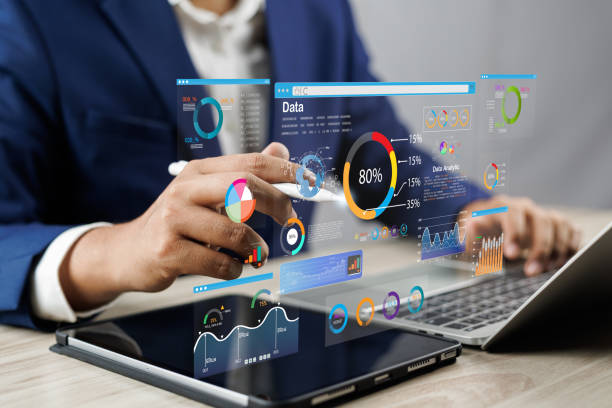
User Experience (UX) is no longer a separate factor from on-page SEO, but rather an inseparable part of it.
Search engines are increasingly emphasizing UX-related factors such as dwell time, bounce rate, and user interaction with the site.
A website that provides a good user experience keeps users on it for longer and encourages them to view more pages.
These signals indicate to Google that your content is valuable to users, and therefore can help improve your ranking in search results.
This is an important analytical aspect that shows how user behavior directly impacts your on-page SEO.
Key UX factors that affect on-page SEO include:
- Responsive Design: Ensure your website displays well and is usable on all types of devices, including mobile phones and tablets.
Google uses mobile-first indexing. - Easy Navigation: Clear menus and a logical site structure help users easily access the information they need.
- Content Readability: As mentioned earlier, using short paragraphs, subheadings, and appropriate fonts increases readability.
- Site Speed: Fast-loading pages provide a better user experience.
- Absence of Disruptive Pop-ups: Sudden pop-ups can disrupt the user experience and lead to high bounce rates.
One more explanation: Ultimately, the goal of both SEO and UX is the same: to provide the best possible experience to the user.
By focusing on these common goals, you can create a powerful internal optimization strategy that not only improves your ranking but also ensures user satisfaction.
Have you ever put yourself in your site user’s shoes? This thought-provoking content question can be a starting point for improving your site’s user experience.
Are you worried your old company website is scaring away new customers? Rasawp solves this problem with modern and efficient corporate website design.
✅ Increases your brand credibility.
✅ Helps attract targeted customers.
⚡ Contact Rasawp for a free consultation!
Advanced On-Page SEO Tools and Techniques

Alongside the basics, using advanced tools and techniques can significantly boost your on-page SEO performance.
One of the most important of these tools is Google Search Console.
This free Google tool provides valuable information about how your site appears in search results, the keywords users use to reach your site, crawling and indexing issues, and the status of your on-page SEO.
Regular use of Search Console for monitoring and troubleshooting is crucial.
Analytical tools like Google Analytics also help you monitor user behavior on your site and identify UX weaknesses.
Advanced techniques include using Schema Markup (Structured Data).
Schema Markup is code added to your content to help search engines better understand the page’s content.
For example, you can tell Google that a section of your content is a “recipe,” “product review,” “event,” or “Frequently Asked Questions (FAQ).”
This can lead to the display of Rich Snippets in search results, which further attracts user attention and increases click-through rates.
This is a specialized and very powerful aspect in optimizing on-page SEO.
Additionally, using Robot.txt and Sitemap.xml files are other advanced techniques.
The Robots.txt file tells search engines which parts of your site not to crawl, and Sitemap.xml provides search engines with a map of all important pages on your site to facilitate their crawling and indexing.
The important news is that Google constantly updates its algorithms; therefore, familiarity with the latest SEO trends and tools and applying them to your internal optimization strategy is of paramount importance.
Common On-Page SEO Errors and How to Fix Them

In the path of optimizing on-page SEO, making mistakes is common.
Identifying and fixing these errors can make a significant difference in your website’s ranking.
One of the most common errors is Keyword Stuffing, which was previously mentioned.
Filling the text with keywords to trick search engines is not only ineffective but can also lead to your site being penalized by Google.
The solution is to use keywords naturally and organically within the content and focus on content quality and value.
Are there still people who think keyword count is more important than content quality? This is a thought-provoking content that indicates this old mindset needs to change.
Another error is Duplicate Content.
Having identical or very similar content on different pages of the site can confuse search engines and harm your SEO.
To fix this, you can rewrite the content, use the rel=”canonical” tag to tell the search engine which version of the content is original, or redirect duplicate pages.
The important guideline is to always produce unique and high-quality content.
Broken Links are also a common problem that harms user experience and sends negative signals to search engines.
Using tools like Screaming Frog or Google Search Console is essential for identifying and fixing broken links.
Other common errors include images without Alt Text, slow site speed, and lack of mobile optimization, all of which can harm your on-page optimization.
By conducting regular SEO audits and fixing these errors, you can ensure that your site’s on-page SEO is always in its best state.
Frequently Asked Questions
And other services of Rasawp advertising agency in the field of advertising
Smart Advertorials: A combination of creativity and technology for digital branding through intelligent data analysis.
Smart Data Analysis: An innovative platform for improving online growth with attractive user interface design.
Smart UI/UX: A new service to increase click-through rates by using real data.
Smart Advertorials: An innovative platform for improving SEO ranking using real data.
Smart Direct Marketing: An innovative platform for improving digital branding by customizing user experience.
And hundreds of other services in the field of internet advertising, advertising consultation, and organizational solutions
Internet Advertising | Advertising Strategy | Advertorials
Resources
On-Page SEO Training from Zero to Hundred in Virgool
Comprehensive On-Page SEO Guide: From Principles to Techniques
On-Page SEO Training – Faradars
On-Page SEO Checklist for Improving Site Ranking
For your business to shine in the digital world, Rasawp Afarin accompanies you by offering comprehensive digital marketing solutions including custom website design, SEO optimization, and targeted advertising campaigns. With us, have a powerful and impactful online presence and pave your way to success.
📍 Tehran, Mirdamad Street, next to Bank Markazi, Southern Kazeroun Alley, Ramin Alley No. 6

